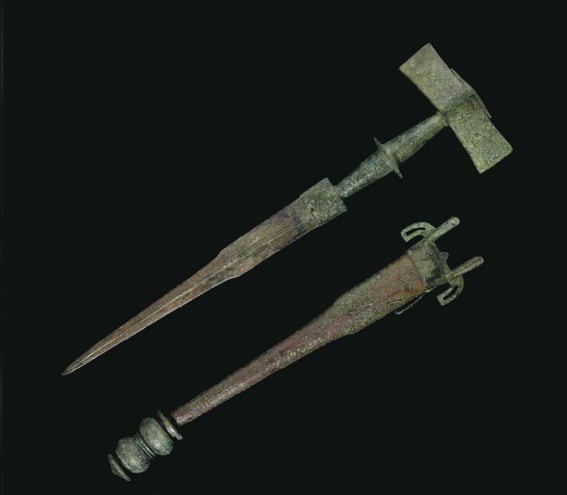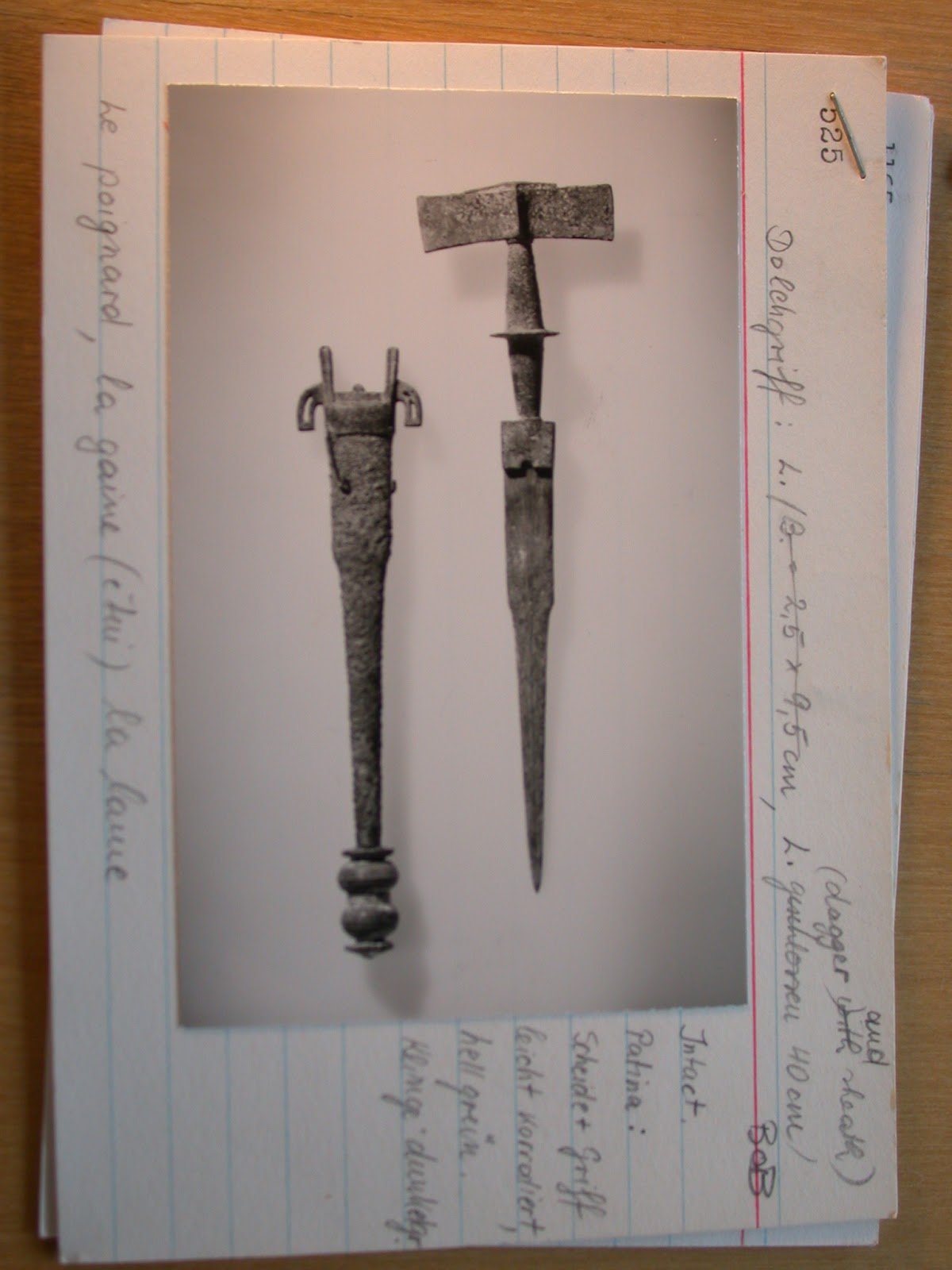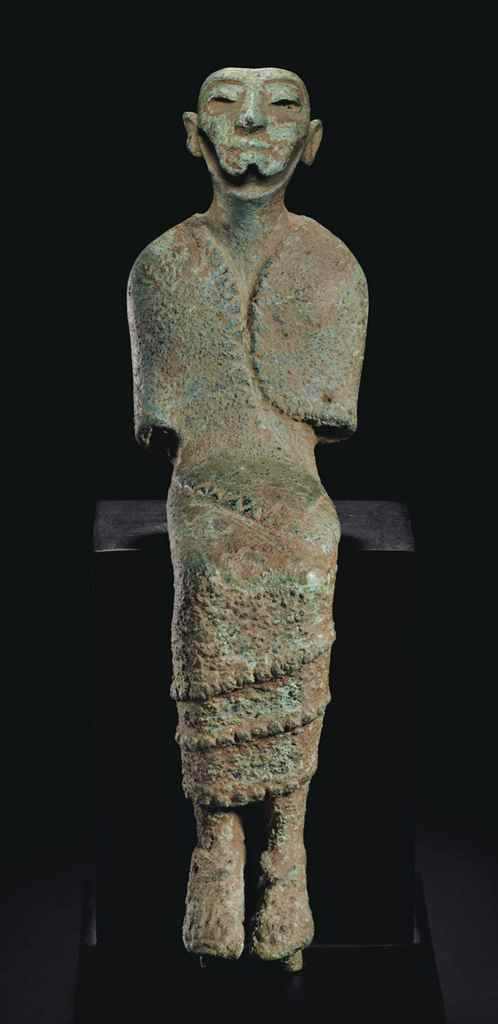Law & Politics
Christie’s Withdraws Potentially Looted Dagger From Antiquities Auction
The dagger is believed to date to the 8th century BC.

The dagger is believed to date to the 8th century BC.

Sarah Cascone

Ahead of Wednesday’s Antiquities sale at Christie’s New York, a bronze Celtic dagger and scabbard was abruptly withdrawn from the sale, reports the Association for Research into Crimes against Art (ARCA).
The dagger is believed to date to the 8th century BC, and comes from a private Texas collection, according to the auction house. However, while Christie’s lists the provenance as having been acquired from New York dealer Robert Haber in 1986, ARCA has uncovered a potentially problematic past.

A photo of the bronze Celtic dagger and scabbard withdrawn from Christies’s fromt the archives of Gianfranco Becchina, an Italian dealer convicted of selling illegally obtained antiquities.
Photo: courtesy ARCA.
In a post by forensic archaeologist Christos Tsirogiannis, ARCA appears to show a photograph of the dagger from the confiscated archives of Gianfranco Becchina, an Italian dealer convicted of selling illegally obtained antiquities. The photo was mounted on an index card with handwritten description identifying the piece as being “Italic, Villanovan period.”
Earlier this year, the auction house pulled four antiquities from the block that may have been linked to Becchina and Giacomo Medici. The two disgraced dealers allegedly both sold works to Los Angeles’s J. Paul Getty Museum, where curator Marion True was forced in 2005 to resign over concerns about the origins of the collection’s antiquities.
artnet News received the following statement via e-mail from a Christie’s spokesperson:
Christies withdrew lot 45 from our Dec 9 Antiquities sale after it was brought to our attention that it is similar to an item recorded in the Becchina archive. To note, the Becchina archive is not currently a publicly accessible archive, which prevents Christie’s from incorporating an adequate search of this particular archive into our due diligence process; we are typically only made aware of such concerns through indirect communications after our catalogues are published. We have withdrawn the lot out of an abundance of caution, and continue to call on those with access to non-public photographic archives such as this to make them freely available for the greater benefit of the antiquities collecting community.
Tsirogiannis also questioned the provenance of a Canaanite bronze enthroned deity (circa 1550–1200 BC) that ultimately remained on offer. The Symes-Michaelides archive, of disgraced dealer Robin Symes and his late partner Christo Michaelides, reportedly contains six professionally-shot photos of the statue. The pair were also deeply embroiled in the controversy over looted art in the Getty Museum, and Symes ultimately served seven months of a two year prison sentence.

A bronze Caananite enthroned deity that failed to find a buyer at auction at Christie’s.
Photo: courtesy Christie’s New York.
As with the dagger, Christie’s lot description makes no mention of the work’s possible connection to a tainted collection. Instead, it notes the previous owner as New York’s Mathias Komor. (The piece, last sold at Sotheby’s in November 1989, currently belongs to a private collector in New York.)
“Christie’s confirms the item is recorded in the inventory of the dealer Mathias Komor who died in 1984, and the item was later sold again at auction by Sotheby’s in 1989,” wrote the Christie’s spokesperson. “This work has been offered with clear title; Christie’s would never sell anything we know or have reason to believe has been stolen, and we devote considerable time and money to investigating the objects in our care.”
The morning of the sale, ARCA speculated that “it will be interesting to see if potential buyers will bid on the piece or if news notifications will render the piece publicly unsellable.” Indeed, the Canaanite bronze ultimately went unsold, despite a pre-sale estimate of $100,000–150,000. The dagger was only thought to be worth $10,000–15,000.
The top lot on the day was a Hellenistic-era Greek bronze boy (circa the 3rd or 2nd century BC), which sold for $353,000.